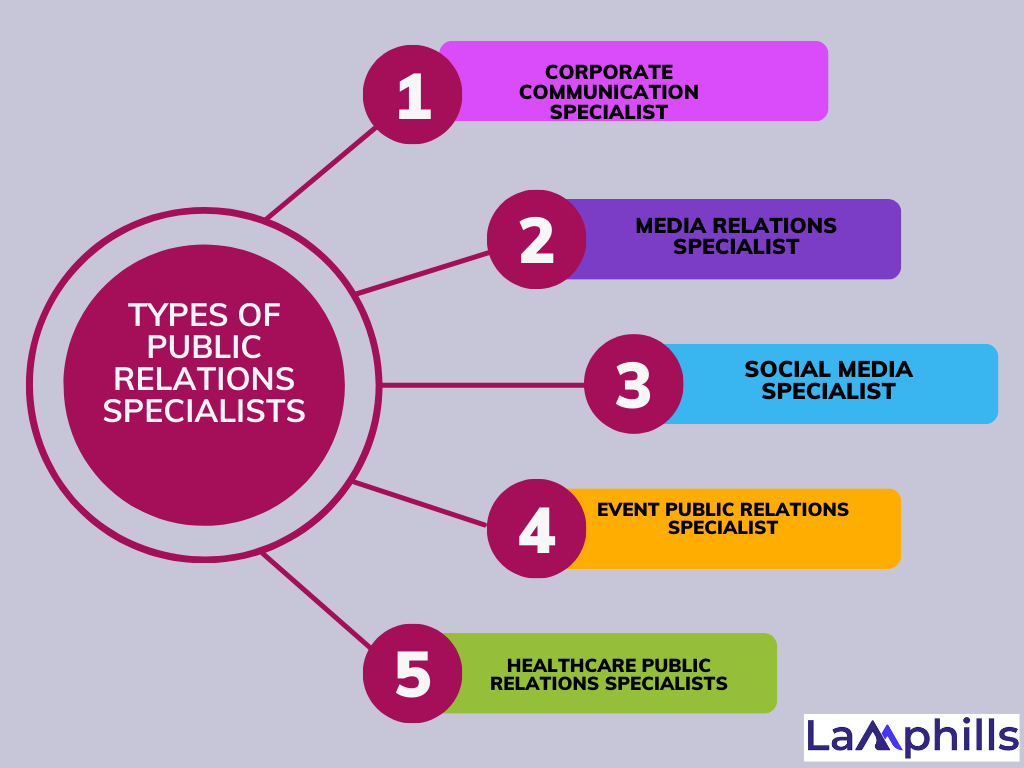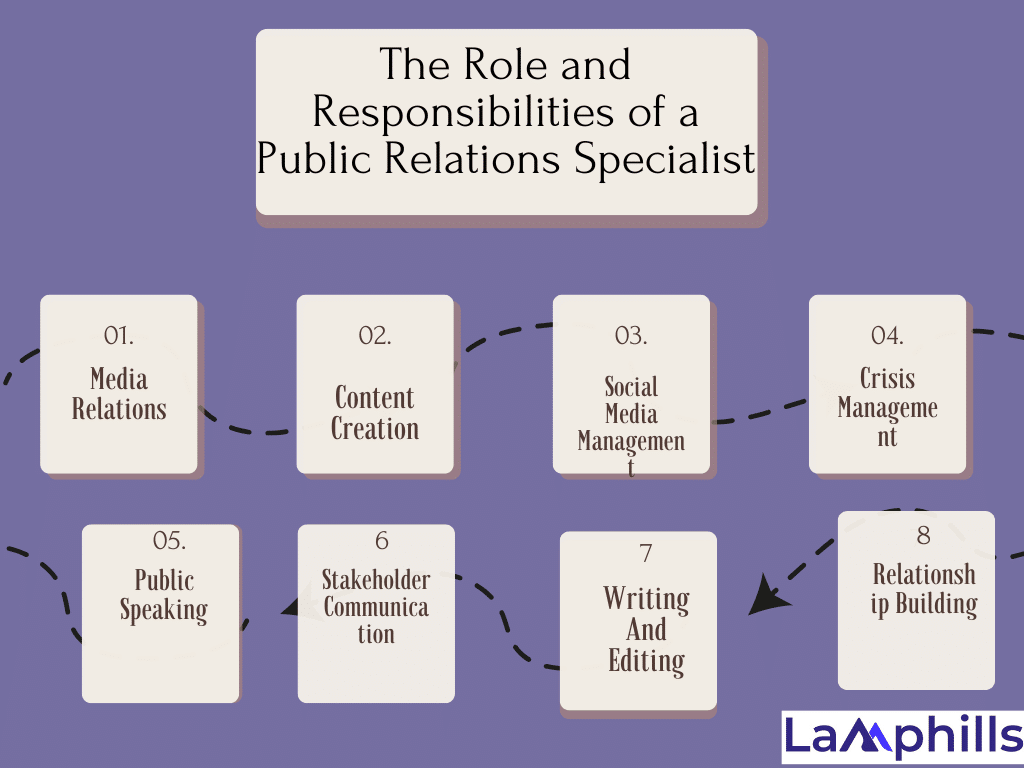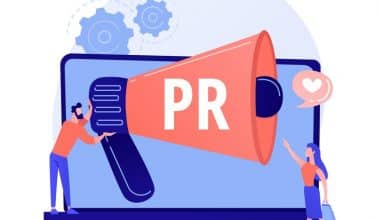Have you ever wondered who is behind the headline-grabbing press releases or the smooth crisis responses that salvage a brand’s reputation? That is the magic of a public relations (PR) specialist. This is where perception meets reality — or at least tries to; public relations specialists’ jobs require more than just dealing with trolls and creating bridges. They aren’t just spin doctors in the digital age. Public relations specialists work hard to cover a wide range of topics, including reputation management, research, and analysis. wherever and whenever public relations takes place. If you’re enthusiastic about stories and love building relationships, this guide is for you! Let’s explore what it takes to become a PR specialist and what the role truly entails.
Key Takeaways
- A PR specialist plays a crucial role in managing the public image of clients or organizations, ensuring positive relationships with key audiences like customers, media, and investors. Their work goes beyond just press releases; it involves storytelling, media relations, and crisis management.
- PR specialists can specialize in various fields, including corporate communications, media relations, social media, event PR, and healthcare PR. Each area requires unique skills to effectively manage communication and reputation within specific contexts.
- To thrive in PR, specialists need strong verbal and written communication skills, strategic thinking, and relationship-building abilities. Organization, problem-solving, and the capacity to handle crises are also key components of the role.
- Becoming a PR specialist typically involves earning a bachelor’s degree in a related field, gaining hands-on experience through internships, and building a professional network. Earning the Accredited in Public Relations (APR) credential can further boost career prospects and credibility.
What is a Public Relations Specialist?
A public relations specialist is in charge of an individual, institution, or brand’s public image and reputation. These professionals are excellent at creating and delivering messages that influence how the public perceives their clients or employers. Their major goal is to build and maintain favorable relationships between their clients and the general public, which includes customers, media, investors, and the larger community.
A public relations professional acts as a liaison between a brand and the general public, ensuring that messages are conveyed positively and strategically. However, this function entails much more than simply sending out press releases. It requires crafting the correct story, building relationships with media, and even being the face of the brand during challenging times. Public relations specialists serve as middlemen, communicating accurate information and managing crises to keep their customers’ image consistent and aligned with their strategic goals.
Types Of Public Relations Specialists

Public relations specialists operate in a variety of industries and specialties to satisfy the diverse communication demands of their clients and organizations. Here are some types of public relations specialists based on their fields of expertise:
#1. Corporate Communication Specialist
These specialists manage firms’ and huge organizations’ overall communication strategies. They manage both internal and external communication, including media relations, crisis management, and employee communication.
#2. Media Relations Specialist
Media relations professionals cultivate relationships with journalists, bloggers, and media outlets to get favorable coverage for their customers or organizations. They suggest story ideas, set up interviews, and handle media requests.
#3. Social Media Specialist
With the rise of digital platforms, social media professionals oversee and curate an organization’s online presence. They create compelling content, design social media strategies, and interact with consumers to increase brand exposure and engagement.
#4. Event Public Relations Specialist
Event public relations specialists promote and manage a variety of events, including product debuts, press conferences, trade exhibits, and fundraisers. They manage media invitations, press coverage, and event execution.
#5. Healthcare Public Relations Specialists
These specialists work in the healthcare industry, coordinating communication between clinicians, patients, and the general public. They are in charge of sharing medical information, communicating during crises, and educating patients.
The Role and Responsibilities of a Public Relations Specialist

Public relations specialists, often known as media experts or communications specialists, create and maintain a positive image for the companies they represent. Rather than paying for advertising, public relations specialists improve their clients’ public image by creating materials for the media to use in their coverage, engaging the client’s audience on social media, and cultivating relationships with the press.
Public relations professionals operate in a range of fields, including education, advertising, politics, and government. In politics and administration, they may be known as press secretaries. Public relations experts’ daily responsibilities include the following:
#1. Media Relations
Establish and maintain contacts with journalists, editors, and media outlets. Pitch story ideas, write press releases, and manage interviews to get media coverage that highlights the client’s or organization’s strengths.
#2. Content Creation
Write intriguing and engaging content for a variety of communication platforms, such as press releases, articles, blog posts, social media updates, and multimedia elements.
#3. Social Media Management
Create social media plans and content calendars, and administer social media accounts to interact with audiences, post updates, and reply to comments or questions.
#4. Crisis Management
Imagine this scenario: it’s Friday night, and you’re about to unwind when a customer calls with awful news—a scandal has just broken on social media. As a PR specialist, you will be responsible for crafting statements, communicating with legal teams, and ensuring that the client’s perspective is conveyed in a way that minimizes damage. It’s stressful yet extremely rewarding when done well.
Prepare for and manage crises that may influence the client’s or organization’s reputation. Create crisis communication plans, respond quickly to negative situations, and deliver factual information to limit potential damage.
#5. Public Speaking
Speak on behalf of the customer or organization during media interviews, public speaking engagements, and presentations. Effectively deliver vital messages and respond to media or public inquiries.
#6. Stakeholder Communication
Create communication methods for interacting with a variety of stakeholders, including consumers, employees, investors, and community members. Maintain open lines of communication to address concerns and provide appropriate updates.
#7. Writing And Editing
Writing is an important element of the work. Whether it’s a press release announcing a new product or a media kit introducing a company to journalists, PR specialists must be masters of the written word. The idea is to provide information that journalists cannot resist.
#8. Relationship Building
Public relations revolves around relationships. I recall the first time I secured a feature for a client in a national magazine—it was all thanks to a coffee meeting with a journalist I had been cultivating a relationship for months. This profession necessitates building good relationships with reporters, bloggers, and media organizations. A good relationship means that when you call with a story, they will pick up the phone. Create and develop relationships with influencers, industry professionals, community leaders, and other essential figures who can help the client’s reputation.
Step-by-Step Guide To Becoming A Public Relations Specialist

Behind your favorite celebrity or a prominent organization is the work of public relations specialists. These professionals generate a positive public image for their clients through social media, media coverage, and press correspondence. They generally work behind the scenes to help build a strong relationship between their client or organization and the public.
Public relations careers are often lucrative, and many PR professionals find their work challenging and rewarding. Read on to learn more about how to become a public relations specialist.
#1. Earn a Bachelor’s Degree
Most Public Relations Specialists have a degree in Communications. Journalism or Public Relations. Don’t worry if you have a different background! I’ve met some amazing public relations specialists who have studied everything from psychology to marketing. The key is knowing how to communicate successfully.
Thus, the first step in becoming a public relations specialist is to obtain a bachelor’s degree in public relations or a similar field such as communications, business, social science, or journalism.
Public relations degree programs typically require four years or eight semesters of full-time study to finish. Most bachelor’s degrees, regardless of area, need around 120 hours of coursework, which includes 60 credits of general education and another 60 credits of major-specific courses.
#2. Building Relevant Skills
PR involves a combination of soft and hard talents. Consider this: you need writing abilities to produce interesting material, people skills to connect with others, and strategic thinking to understand the broader picture. Attending workshops and joining local public relations groups were my favorite ways to develop these skills. It’s surprising how much you can learn from individuals in your field!
- Interpersonal Skills
Public relations specialists must comprehend how people may react to a specific message from their client or company. They must also be transparent and personable in order to establish solid relationships with media members and ensure accurate and positive coverage for their clients.
- Organization
Public relations specialists usually always have multiple balls in the air. Whether they’re drafting speeches, scheduling social media material, or developing an overarching strategy and image, public relations professionals must keep organized while multitasking.
- Problem-Solving
Crisis communication is a key component of public relations. Under difficult situations, public relations specialists must be able to handle difficulties and determine the best course for their clients.
- Speaking
On occasion, public relations specialists may act as spokespersons for their organizations. To effectively represent their organization or client, they must react articulately to demanding queries while adhering to pre-approved talking points.
- Writing
Many public relations specialists write speeches and press releases. They may also handle social media posts and captions across many platforms. As so, they wrote
Communication skills must be just as strong as their public speaking abilities.
#3. Gain Experience
Getting your foot in the door can be difficult, but internships are invaluable. My first PR internship was unpaid, but the experience I gained—such as writing my first press release and seeing it published—was invaluable. Look for internships at public relations agencies, media outlets, or even in-house positions at companies. Also, don’t underestimate the value of freelancing; it’s an excellent method to develop a portfolio.
This is because PR is a skills-based business; therefore, getting relevant experience early in your work or while attending school is critical for progress. You can obtain experience through public relations internships, your school newspaper, or working as a social media manager for your favorite campus club or group. The best bachelor’s in public relations schools typically maintain an on-campus PR lab or relationships with local PR firms offering internships. Research these opportunities before enrolling in an undergraduate PR program.
#4. Try Joining a Professional Association
Public relations is a people-oriented career, and your network might lead to opportunities. LinkedIn became my go-to place for connecting with other public relations practitioners. I also went to industry events, where I met journalists and possible clients. The relationships you form can be useful when you’re looking for your next job or need a favor from a reporter.
Many public relations specialists also join professional organizations like the Public Relations Society of America (PRSA) or the International Association of Business Communicators (IABC) to improve their professional image. It is vital to explore your target sector to choose which professional association will benefit your career the best. Here are a few perks that professional public relations organizations usually provide to customers:
- Career development training
- Networking opportunities such as conferences
- Professional credibility
- Job recommendations
- Awards and acknowledgments
#5. Consider Earning The Accredited in Public Relations (APR) Credential
Although they’re not required, certificates might offer you a competitive advantage. APR (Accredited in Public Relations) certification is one way to show that you take your work seriously. After working in the industry for a while, I pursued mine, and it proved my dedication to the work, which helped me be promoted.
You can think about getting a professional credential to certify your PR abilities after you’ve gained some work experience. APR certification is given to practitioners who have at least five years of experience in the area by the Public Relations Society of America (PRSA), the industry’s premier professional association. Below, we go over specifics of the APR certificate.
How to Earn the APR Credential
The PRSA APR certificate displays advanced public relations and communication skills to employers and colleagues. This optional certification can improve career opportunities and earnings potential. Continue reading to learn about the processes of becoming APR certified.
- Work in PR for at least five years.
PRSA advises that candidates have at least five years of public relations experience before taking the APR certification exam. College students and recent graduates can pursue the Certificate of Principles in Public Relations while getting the required work experience for the APR certification.
- Apply to take the APR Exam
When you are ready, you can apply for the APR exam on the PRSA website. The exam costs between $385 and $410 for Universal Accreditation Board (UAB) members and $745 for non-members.
- Sit for a Panel Presentation
PRSA uses a panel presentation to evaluate an APR candidate’s PR knowledge in ways that an exam cannot. The panel presentation tests 12 different areas of public relations knowledge through a questionnaire and presentation, for which candidates prepare a portfolio.
- Take the APR Exam
The APR test consists of 132 scored questions. To prepare for the exam, PRSA provides a free APR study guide or an online APR prep course for $195 for PRSA or UAB members and $295 for non-members.
- Renew your credentials.
After obtaining an APR certification, public relations professionals must renew it every three years by completing the necessary amount of continuing education units (CEUs). CEU requirements fluctuate, so visit the PRSA website for the most up-to-date information on renewal.
#6. Create A Portfolio
When you’re ready to apply, make sure your CV emphasizes your writing abilities, media connections, and any successful campaigns you’ve led. My friend once said, “Your portfolio is your golden ticket in PR,” and she was right. Showcase those press releases, event recaps, and media placements proudly! This checklist will guide you through common PR interview questions and provide tips for crafting confident, well-thought-out responses
Many employers prefer PR specialist candidates to submit a portfolio with their job applications. Your public relations specialist portfolio can include:
- High-quality assignments completed during your bachelor’s degree
- Projects completed during your on-the-job training, entry-level job or job shadowing
- Projects from any certification courses you may have taken
- Training projects you may have completed through your professional association
- Samples that highlight your skills related to the specific job you’re applying for
To create a portfolio that stands out, it’s helpful to include samples related to the industry you’re applying to, which you can do by creating a few high-quality pieces that demonstrate specific skills.
What is an example of public relations?
PR may occur in the form of a company press release, news conference, interviews with journalists, social media postings, or other venues.
Do you need qualifications to be a PR?
While there are no specific educational requirements for public relations specialists, most agencies and departments seek applicants who have earned bachelor’s degrees in a communications-related field, such as public relations and journalism.
Publicist vs Public Relations Specialist
The terms “publicist” and “public relations specialist” are related professions in the field of public relations, but they frequently have different priorities and responsibilities. A publicist typically focuses on the tactical aspects of promoting a single person, product, or event, whereas a public relations expert has a more strategic and comprehensive function, working on larger communication efforts for an organization or individual. The titles can be used interchangeably in some settings, although the specific obligations can differ depending on the organization and industry.
Conclusion
Becoming a public relations specialist is a journey filled with creativity, challenges, and endless opportunities. It’s a career that allows you to shape narratives and build connections, making a real impact on how brands are perceived. If you’re ready to dive in, follow these steps, and don’t forget to enjoy the ride. It’s a rollercoaster, but one that’s worth every twist and turn.





